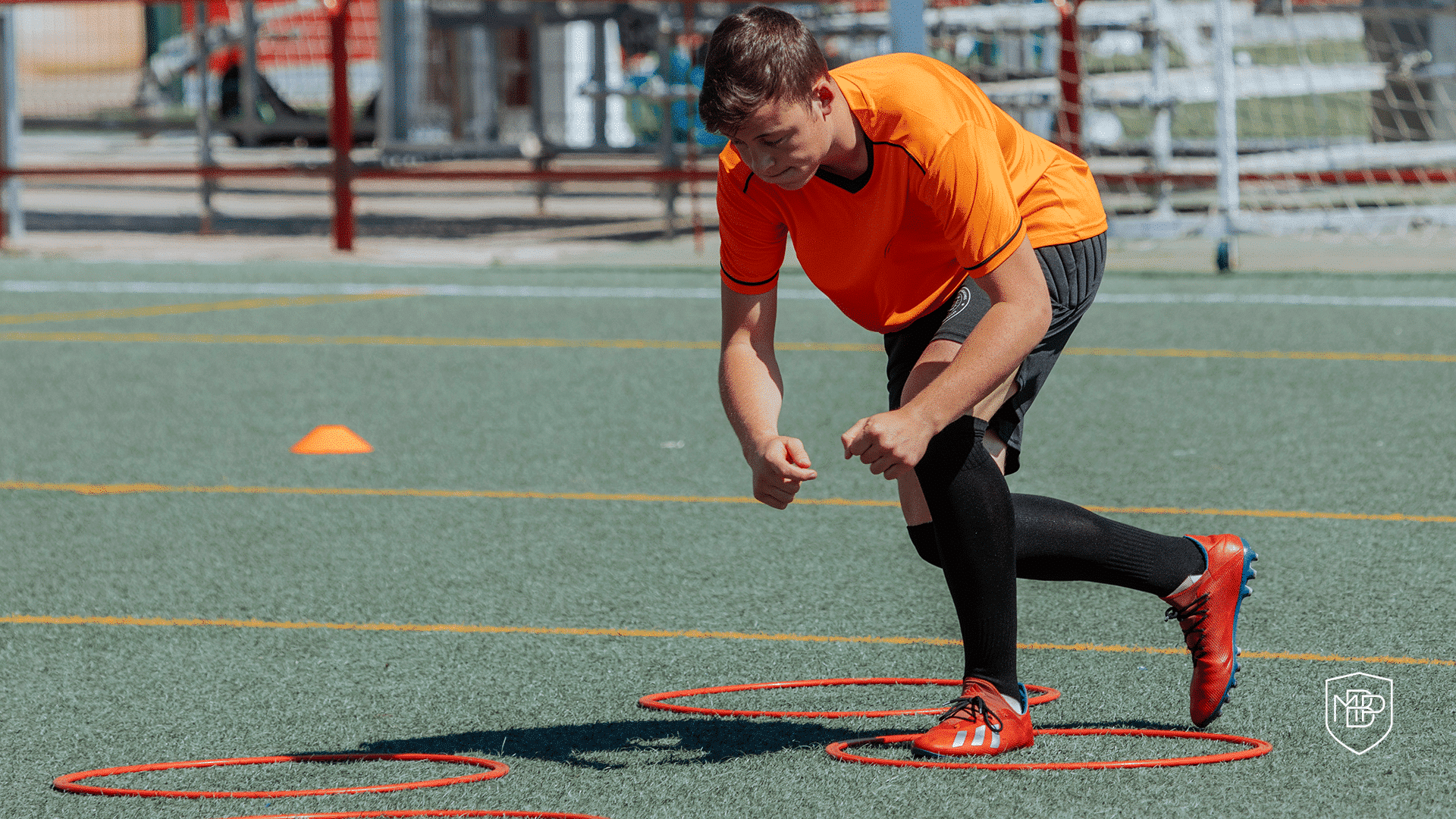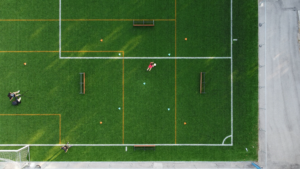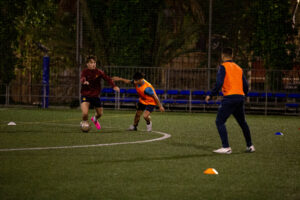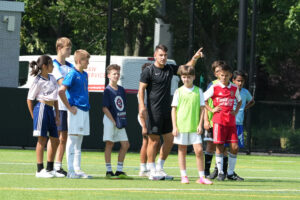Coordinative circuits are a type of didactic strategy (DS) focused on the improvement of the player’s coordinative structure. This variety of task is normally used in the activation sub-phase, i.e. the first task of the training session.
According to Schreiner (2008), coordinative circuits are composed of a series of elements distributed according to the content or objective to be worked on. The circuits will be built using different types of equipment such as cones, hurdles, poles and hoops. These will have a starting point (start of the circuit) and an ending point (finish of the circuit).
If we look deeper into the characteristics of the coordination circuits, one of the great features is the possibility of performing them with or without a ball. Depending on the type that the coach decides to use, the development of the training objective will be modified.
1- Circuits without a ball: The main objective is the training of the player and their relationship with their own body, i.e. basic motor skills and physical capacities.
2- Circuits with a ball: The main objective is the training of the player with the environment, i.e. with the ball, focusing on the development of specific motor skills (technical skills).
Nevertheless, this model of DS presents a series of advantages and disadvantages that must be taken into consideration:
Advantages:
1- The level of specificity is very high, meaning the training of the selected content appears predominantly in the circuits. Therefore, the improvement that the player will achieve with respect to the objective will be substantial.
2- The number of repetitions of the content is very high, therefore the coordination structure, as well as the conditional structure, benefits from the improvement of the basic and specific motor skills due to the large number of accumulated experiences.
Disadvantages:
1- The transfer to the real game is very low due to its analytical characteristics.
2- Decision making is non-existent or simple, meaning that the player will not solve any major cognitive problems. As it is a task far from the true reality, the player will not show an improvement in their understanding of the game.
Finally, coordinative circuits present a series of characteristics that must be followed in order to increase the quality of the task, and, in turn, improve the efficiency of the player with respect to the DS:
– Cognitive requirements within the task: Although coordinative circuits are far from the game’s true reality, the coach can add cognitive stimuli that will enhance the quality of the task.
– Number of lines and players: In order to maximize player participation, we should increase the number of lines from between 3-5 to reduce the number of waiting players.
– Time/Space: The spaces should be reduced, avoiding extending the duration of the circuit too much, looking for a player participation time of between 10-15 seconds.
CONCLUSIONS
The coordinative circuits are a very specific didactic strategy that will help to improve the player in certain aspects. In addition, if the coach correctly applies the DS, the player’s improvement in the training objective will be significant.
Finally, for coaches who want to know more about various types of didactic strategies and the different characteristics of them, in MBP’s specialist course in Youth Development Methodology, they will receive an in-depth education on this subject, developing all the necessary skills for them to take the next step in their professional career.

